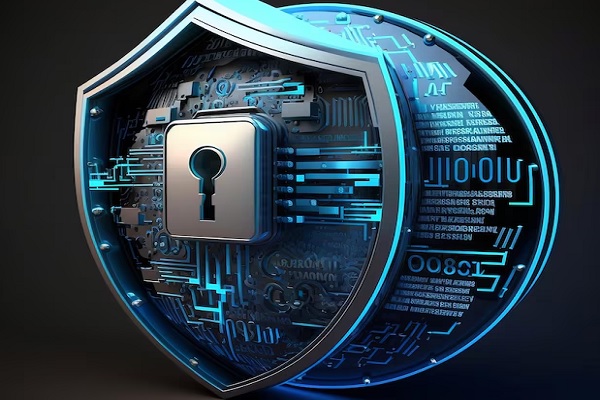Key Takeaways:
- Importance of securing Network-Attached Storage (NAS) systems.
- Practical tips for enhancing NAS security.
- Understanding common threats and how to mitigate them.
- Best practices for data backup and recovery.
Importance of NAS Security
Network-attached storage (NAS) systems are becoming increasingly common among consumers and organizations because of their capacity for storage and convenience of use. With the rise in data breaches and cyber threats, it’s essential to prioritize network attached storage security to protect sensitive information from unauthorized access and potential breaches. Securing your NAS device is about safeguarding data and maintaining its integrity and availability.
Because NAS systems offer a central location for data access and storage, hackers find them to be a lucrative target. Large volumes of sensitive data could be compromised in a successful breach due to the possibility of storing all of that data in one easily accessible location, which can streamline operations. You can ensure that your data is safe and that your NAS runs without hiccups by putting strong security measures in place. It is impossible to overestimate the significance of NAS security, particularly as more businesses depend on these systems for storage. Preventive security measures are essential to avoid evolving dangers in the digital realm.
Common NAS Threats
NAS devices, much like any other networked systems, face a variety of threats. These include, but are not limited to:
- Malware and Ransomware Attacks:Cybercriminals often use malware and ransomware to compromise NAS systems. Once infected, these threats can encrypt your data, making it inaccessible until a ransom is paid. Ransomware attacks have been increasing, targeting businesses and individuals, causing significant data loss and financial damage.
- Unauthorized Access:Weak passwords and lack of proper access controls can lead to unauthorized access to your NAS, allowing cybercriminals to steal or manipulate your data. An unauthorized user gaining access can compromise sensitive information, leading to potential identity theft or corporate espionage.
- Data Leaks:Misconfigured settings or vulnerabilities within the NAS firmware can leak data, exposing sensitive information to the public or malicious entities. Such leaks can damage reputations and lead to loss of trust among clients and stakeholders.
- Physical Threats:NAS devices are also susceptible to physical threats such as theft or damage, resulting in data loss if proper precautions are not taken. Physical access to the device can bypass digital security measures, emphasizing the need for physical security protocols.
Understanding these threats is the first step in mitigating risk and ensuring your data remains secure. Taking proactive measures to address these vulnerabilities will help protect your NAS from potential attacks. Awareness and vigilance in monitoring and updating security practices are essential in maintaining a secure NAS environment.
Tips to Enhance NAS Security
Enhancing the security of your NAS device doesn’t have to be complicated. Here are some practical tips to get you started:
- Regularly Update Firmware:By keeping your NAS firmware updated, you can be sure you have the newest features and security updates. Manufacturers often release updates to fix security flaws and enhance functionality. Knowing vulnerabilities cannot be exploited by routinely searching for and installing these updates.
- Use Strong, Unique Passwords:Avoid using default or easily guessable passwords. Implement multi-factor authentication (MFA) for an extra layer of security. This adds step to the login process, making it more challenging for unauthorized users to gain access. Make sure passwords are complex, combining letters, numbers, and symbols.
- Enable Network Encryption:Encrypting your network traffic can safeguard your data from interception and unauthorized access. For example, using end-to-end encryption can provide robust security during data transfer. This technology ensures that data is protected from the point of origin to the destination, reducing the likelihood of interception.
- Restrict Access:Limit access to your NAS system to only those users who need it. Configure user permissions carefully and regularly review access logs to detect suspicious activity. Segregating user roles and permissions reduces the impact of a potential breach.
- Regular Backups:Perform regular backups and ensure they are stored securely, preferably offsite. This will be crucial in case of data loss or theft. Automated backup schedules help maintain consistency and reduce the risk of human error. Having a sound backup strategy can significantly reduce downtime and data loss.
Best Practices for Data Backup and Recovery
Data backup and recovery should be integral to your NAS security strategy. Here are some best practices to follow:
- Automate Backups:Set up automated backup routines to guarantee that your data is routinely backed up without human intervention. Automated procedures offer a reliable backup schedule and lessen the chance of missed backups. Additionally, automation can free up important time and resources for other important duties.
- Store Backups Offsite:Storing backups offshore shields them from theft or physical harm at your primary site. Cloud storage or a different physical location can add extra security. Offsite backups guarantee that all data is not lost during a calamity at the primary site.
- Test Backup Integrity:Test your backups frequently to ensure they can be successfully restored in an emergency. This step ensures that your backup plan is working and avoids unpleasant surprises during crucial recovery scenarios. Frequent testing also assists in identifying any possible problems that can obstruct healing.
- Use Redundant Storage:Employ cloud or other redundant storage methods for additional backup layers. Redundant storage options provide a fail-safe in case one backup method fails. Diversifying your backup methods can enhance data security and availability.
Conclusion
Securing your NAS device is paramount in today’s digital age. Understanding common threats and implementing practical security measures can protect your data from potential risks. Regular updates, strong passwords, network encryption, restricted access, and thorough backup strategies are all foundational steps toward robust NAS security. Taking these steps secures your data and provides peace of mind. Ensuring the safety and availability of your information can ultimately contribute to the ongoing success and resilience of your operations.
